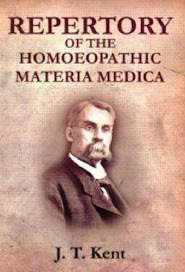Guide to Kent’s Repertory: A Detailed Overview

Kent’s Repertory has long been an essential tool for homeopaths worldwide, providing a structured method to analyze symptoms and identify remedies. Dr. Ahmed Currim’s book, Guide to Kent’s Repertory, offers a comprehensive look into this classic work, making it more accessible and understandable for practitioners and students alike.
An Overview of Currim’s Guide
Published by the Hahnemann International Institute for Homeopathic Documentation in 1996, this 250-page book provides an in-depth exploration of Kent’s Repertory. It is structured into twenty sections, with the first twelve serving as an introduction to Kent’s methodology. These initial chapters address critical aspects such as:
- Kent’s Original Plan – Understanding the foundational structure and purpose behind Kent’s Repertory.
- Problems with Existing Repertories – Discussing limitations of other repertories that Kent aimed to improve upon.
- Classification and Modification of Symptoms – Explaining how symptoms are categorized and altered for better analysis.
- Construction of Rubrics – Examining the logic behind grouping various symptoms.
- Notes and Examples – Providing practical insights for using the repertory effectively.
The Central Focus: Descriptions of Pain
One of the standout sections of the book, comprising 100 pages, is devoted to pain. Since pain is one of the most frequent symptoms encountered in homeopathy, Currim’s detailed analysis helps practitioners navigate the repertory sections related to different types of pain. A notable example includes the assembly of headache modalities involving heat and cold onto a single page (p. 30), streamlining the process for repertorization.
Additional Insights and Features
Beyond pain, Currim’s guide covers various essential topics:
- Special Rubrics and Cross References – Providing clarity on Kent’s rubric organization.
- History and Case Taking – Laying out basic principles and best practices.
- Repertorization – Demonstrating methods to match symptoms with remedies effectively.
- Advantages of Using the Repertory – Listing over 30 reasons why homeopaths should rely on Kent’s system, with detailed explanations.
- Kent’s Published Paper on Repertory Formation – Offering historical context on how Kent developed his repertory.
An example from the book highlights how the repertory aids in diagnosing complex cases. Dr. Dienst, a homeopath in the USA, once struggled to understand a young woman’s symptoms of malarial fever until her peculiar behavior—confusing Dienst for another doctor—led him to recognize Stramonium as the correct remedy. Within half an hour of taking the remedy, she became rational and fever-free. Such examples illustrate the repertory’s practical applications.
Understanding the Structure and Logic of Kent’s Repertory
Currim provides an insightful discussion on how Kent grouped rubrics logically, particularly in the Modification of Symptoms section. This segment, though complex, is crucial for those wanting a deeper grasp of repertory construction.
Currim’s expertise stems from his interactions with Dr. Pierre Schmidt, a direct intellectual descendant of Kent through Frederica Gladwin and Alonzo Austin. His research offers unique insights rarely found elsewhere in print.
Strengths and Weaknesses of the Book
Strengths:
- A rich resource for both beginners and experts in homeopathy.
- Includes valuable historical context, case studies, and diagrams.
- Offers corrections for known errors in Kent’s Repertory (e.g., misordered rubrics on pages 166-168).
- Encourages in-depth study with side-by-side repertory reading.
Weaknesses:
- Lacks an index, which would have made referencing easier.
- Does not include a key word/abbreviation list, requiring readers to search for explanations.
- Requires focused study—this is not a casual read.
Conclusion
Ahmed Currim’s Guide to Kent’s Repertory is an essential companion for any serious student or practitioner of homeopathy. While it demands careful study, the insights it provides are invaluable for understanding and effectively utilizing Kent’s Repertory. Whether you are a seasoned repertory expert or a student beginning your journey, this guide serves as a crucial resource in refining your approach to homeopathic practice.